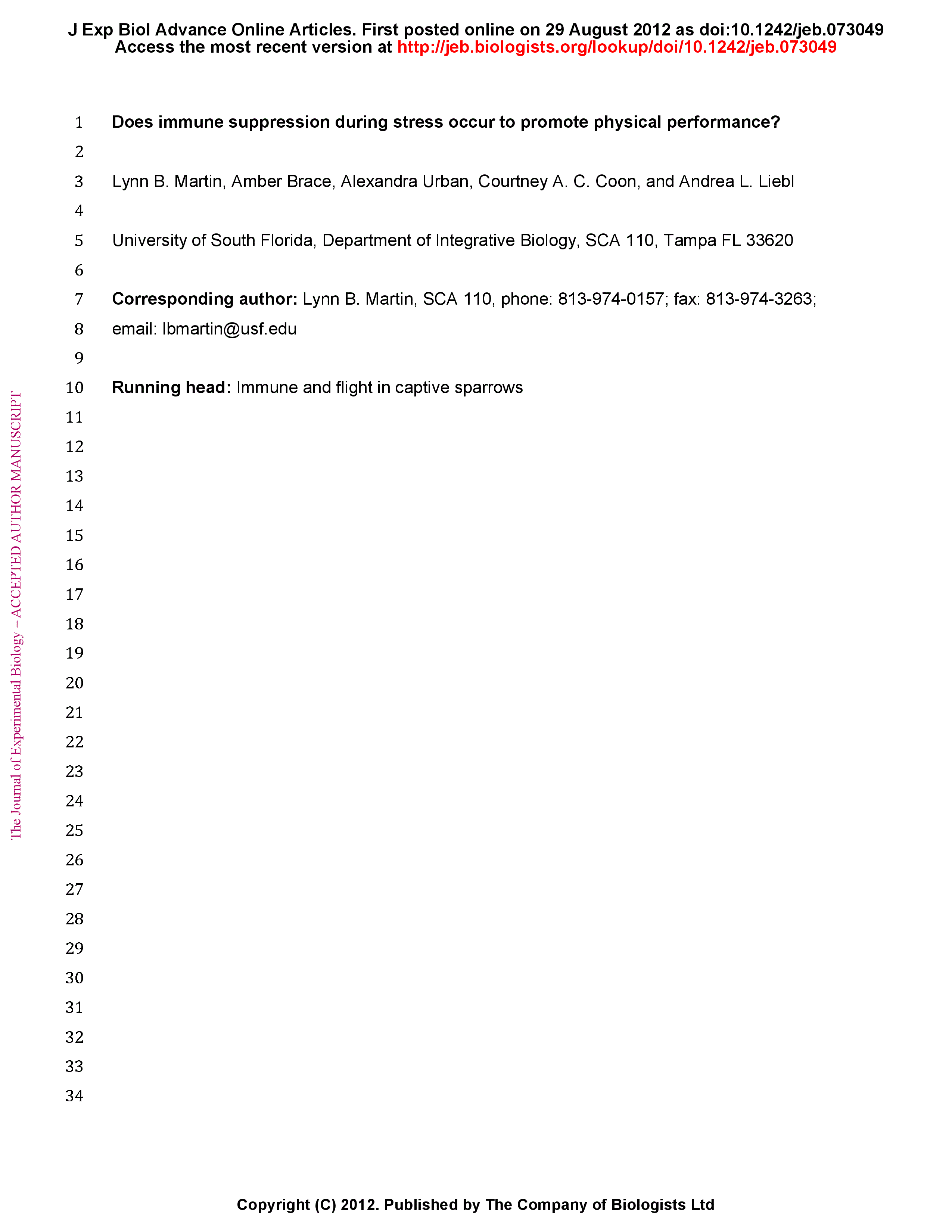Summary
Two adaptationist hypotheses have been proposed to explain why stress, particularly elevation of stress hormones (i.e., glucocorticoids), tends to suppress immune functions. One is that immune suppression represents efforts to minimize autoimmune responses to self-antigens released as organisms cope with stressors (i.e., the autoimmune-avoidance hypothesis). The other is that immune suppression occurs to promote a shunting of resources to life processes more conducive to survival of the stressor (i.e., the re-allocation hypothesis). Here in wild-caught house sparrows (Passer domesticus), we tested the second hypothesis, asking whether sustained elevation of baseline glucocorticoids, due to captivity, caused a greater rate of decline in immune functions than flight performance. A greater decline in immune functions than flight performance would support the re-allocation hypothesis. As in previous studies, we found that captivity tended to alter baseline corticosterone, suggesting that house sparrows experience captivity as a stressor. Captivity also affected several constitutive and induced innate immune metrics: bacterial (Escherichia coli) killing activity (BKA) of blood and oxidative burst of leukocytes both changed in a manner consistent with immune disregulation. In contrast, breast muscle size and vertical flight (hovering) duration improved over captivity. Collectively, these changes provide indirect support for the re-allocation hypothesis, although within individuals, changes in immune and physical performance were unrelated.








